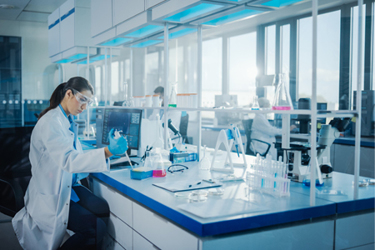Improving Released N-glycan Analysis In Biotherapeutic Development Using Premiere Solution With MaxPeak High Performance Surfaces (HPS) Technology
By Ximo Zhang, Jacob Kellett, Robert E. Birdsall, Ying Qing Yu

Characterization and monitoring of glycosylation are necessary during the development and manufacturing of biotherapeutics to ensure that drug products are consistent, safe, and efficacious. Biopharmaceutical laboratories have developed robust standard analytical procedures for the analysis of glycosylation. However, acidic glycans, especially complex phosphorylated glycans, can demonstrate low recovery during HILIC-FLR/MS analysis due to ionic interactions with metal surfaces. To address this issue, we optimized the existing HILIC chromatographic separation method for RFMS labeled N-Glycans using the new BioAccord System and ACQUITY Premier Glycan BEH Amide Column to protect against unwanted analyte-surface interactions.
Benefits include:
- Enhanced recovery of acidic glycans
- Improved recovery and peak shape of phosphorylated glycans
- Automated glycan peak assignment capability
Explore how this application note demonstrates enhanced recovery of released glycans by the ACQUITY Premier Solution with MaxPeak HPS technology, which helps develop robust and unbiased glycan assays for biotherapeutic development, manufacture, and release.
Get unlimited access to:
Enter your credentials below to log in. Not yet a member of Bioprocess Online? Subscribe today.
